As a devotee of winter, I always welcome snowfall. So when last weekend's forecast included a severe snowstorm for the Northwest Rockies, my heart fluttered, giddy with excitement. At zero dark early on Saturday morning I hustled out to the nordic ski area near the East Gate of Yellowstone eager to enjoy some untamed snowshoe adventures. I arrived to a gentle but persistent snowfall at Buffalo Bill’s hunting cabin where I bivouacked the 4Runner. With at least ten inches already decorating the landscape, some darker storm clouds loomed in the distance, bringing a keen sense of impending doom to the boreal topography. Nonetheless, I strapped on my snowshoes, donned my gaiters, and set out on an adventure to remember. But I’m getting ahead of myself. Let’s start from the beginning.
Famed naturalist John Muir once wrote that "To walk in nature is to witness a thousand miracles. To snowshoe through it is to become a part of them." We see heavy snowfall in the greater Yellowstone region, providing ample opportunity to don those nordic clogs and enjoy winter in all of its sub-zero glory. Winter doesn’t wait for the calendar in these parts, so my first backcountry foray came in early November and took me to the Absaroka Beartooth Wilderness where the snow had already begun its patient repainting of the landscape. No thermometer needed to tell me that temps sat below freezing. The crystalline icicles decorating the trailhead footbridge gave it away. Smallish ursine tracks in the fresh powder alerted me I had company along the trail, most likely a juvenile black bear. As my snowshoes carried me deeper into winter’s beauty, I reached a junction at Lake Fork Creek affording arresting views of Thunder Mountain and Mount Rearguard, both decorated in a haunting morning-grey mist and fresh white powder—an Ansel Adams print come to life. Not a bad way to spend a Saturday.

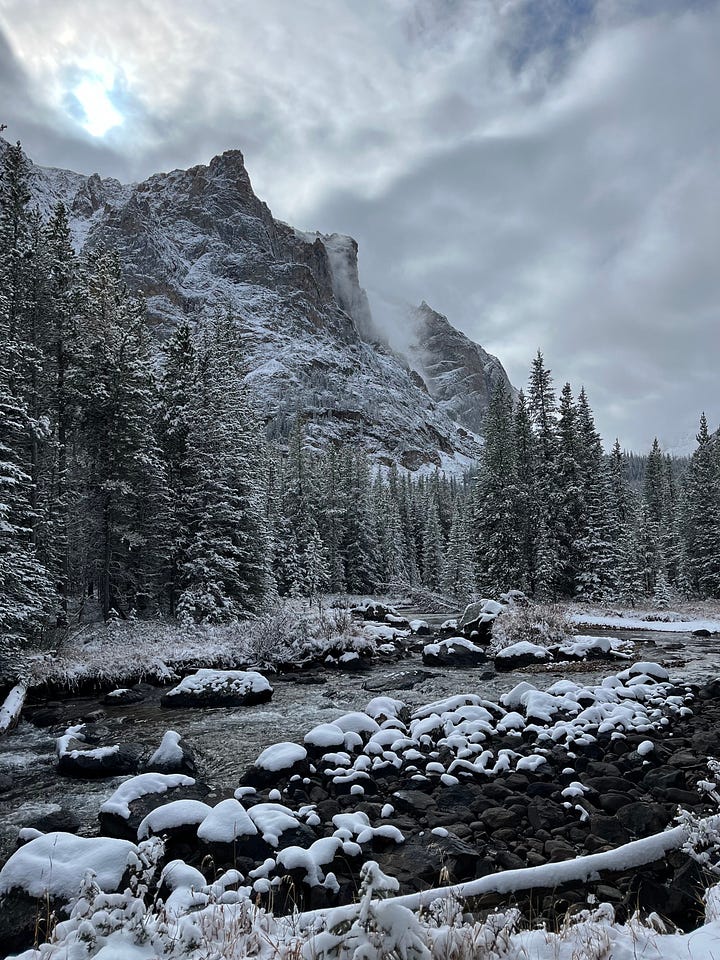
A few days before Christmas I ventured through the rugged beauty of the Wind River Canyon and then over Togwotee Pass eager for some snowshoe solitude in the Tetons. The park service closes Teton Park Road to cars from November to March, grooming it for snowshoers and nordic skiers. While beautiful in the summer, winter reimagines the Tetons in robes of pure white, leaving visitors awestruck at their grandeur. My frigid trek began on a bluebird morning near Signal Mountain. The striking views of an icy Jackson Lake and a snow-cloaked Mount Moran commanded my attention. Then, a ginormous bull moose crossed the snow-covered trail and hurried into the forest, harassed by a rather overconfident red fox. After lunch, I drove out to the Taggart Trailhead and trekked to the ice-crusted Jenny Lake, passing a small herd of elk grazing in Lupine Meadows. By this time exhaustion set in so I headed back to town to refuel on a juicy elk burger at the Silver Dollar taking in the festive sights in Jackson Town Square—a magical Christmas scene.
Fast-forward to late January of this year when I travelled out near Cooke City, MT for some snowshoeing after a Yellowstone howler dumped two feet of snow in the Beartooth Wilderness. Many of the snowmobile trails at this spot also make for great snowshoeing, but on this -17℉ day I arrived well before the snow tiller and had to blaze my own trail on the ridge above Pilot Creek. After about an hour of tracking an elusive moose in deep powder, the severe cold began to gnaw at my soul. Gathering some dry deadfall, I kindled a fire, letting its warmth permeate my little forest nook; there I sat, alone but for the crackling of the fire in the peace of the wilderness. Upon my return to the car, the parking lot bustled with snowmobilers and the sound of 80s metal blasting from a winter tailgate, so I joined in, sharing lunch and Van Halen with some newfound friends. Another magnificent day of snowshoe adventures.
Let’s return to the excitement back at the East Gate. Locals know March as “The Second Winter” in the greater Yellowstone region, often carpeting Wyoming with heavy snowfall into early April. While other regions of the country begin to enjoy spring-like weather, winter takes the stage for its second act in the Northwest Rockies. On this particular day I got caught up in a storm for the ages.
The day began innocently enough with steady snowfall, the kind that muffles the landscape in a reverent silence, making my trek through the forest almost meditative. I took inventory of bear claw scratches on a white bark pine, stumbled on snow hare tracks leading to an occupied nest, and crouched to snap a quick photo. Suddenly, the wind picked up and the tall pines groaned in tortured lament as the icy flakes pummeled them sideways. The snow fell heavy and fast, creating whiteout conditions. The sky and the ground melted into one, so I paused under thick pines to check my compass and steady myself. Off in the distance, I heard wolves begin howling a melancholy ballad, a requiem to the wind. And the wind, as if it understood, howled back. The call of the wild. What an experience!
Recognizing the danger of the storm, I made the at once joyous and tortuous trek back to the 4Runner. When I noticed smoke curling from the chimney of the Buffalo Bill Warming Hut, relief washed over me like a Navy SEAL who found his exfil point. A welcome sight! The whole experience left me feeling exhilarated and renewed, reminding me of the timeless maxim of Henry David Thoreau: “Take long walks in stormy weather or through deep snows in the fields and woods, if you would keep your spirits up. Deal with brute nature. Be cold and hungry and weary.”
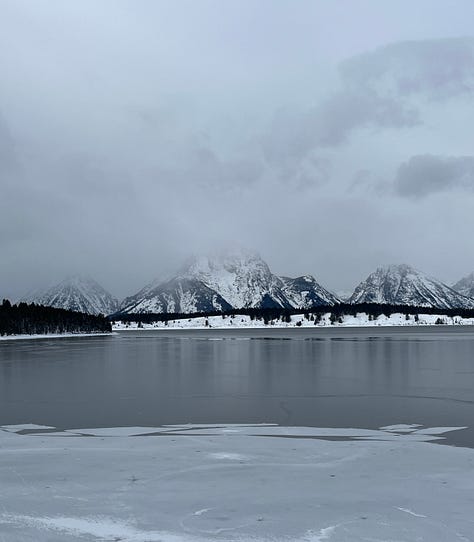
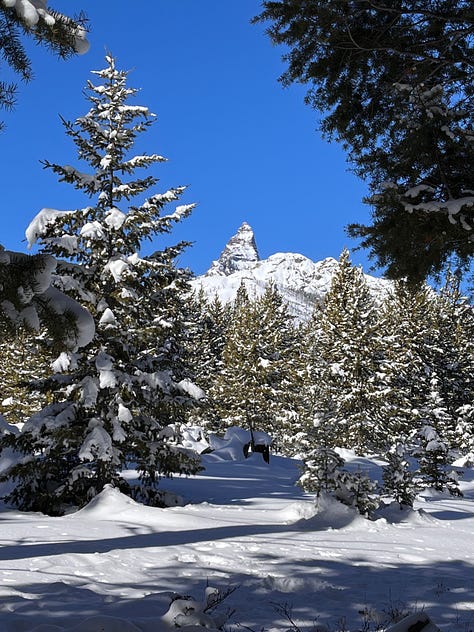

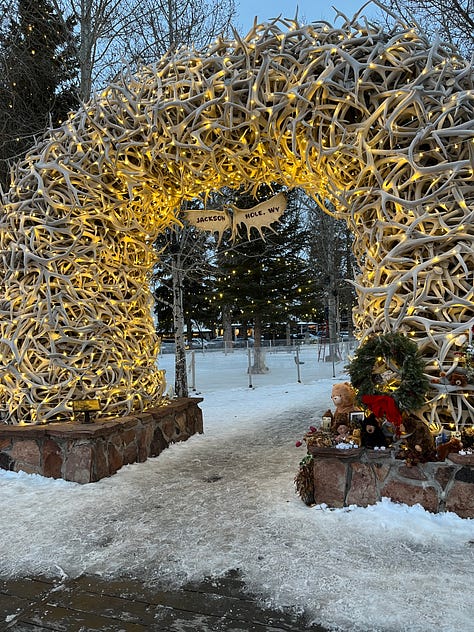

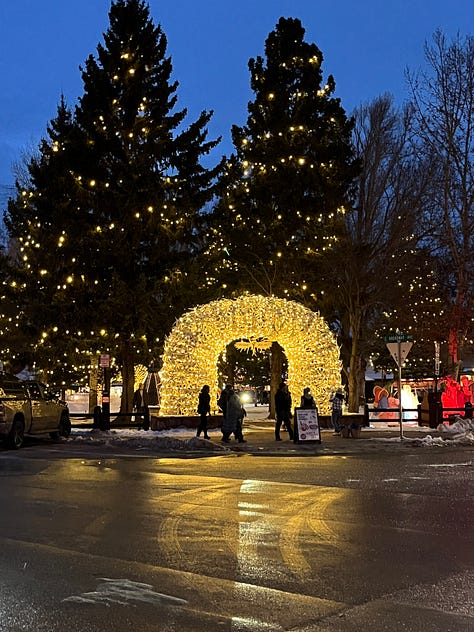





As always, I love reading about your adventures. Stay safe my friend, and God bless you!